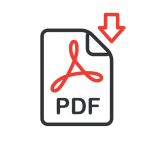
Going paperless is not new. Most business are already at some level of paperless. Typical paperless environments start by retaining files in their original electronic format (e.g. Word, Excel, and PDF) and/or scanning paper documents into image or pdf files. These files are saved to a hard drive in a Windows directory. Technically this is “paperless” and may even work great for some time. If your business has one employee, it may even work for a long time. Unfortunately, this entry level of paperless is not sustainable in the real world.
The shared drive solution
The shared drive solution involves setting up one or more networked drives so multiple users can add files and access files others have added. Shared drives can be in the office or the cloud. Sounds easy, right? Matter of fact, it is the easiest way to go paperless. Unfortunately, there is one catastrophic flaw to the shared drive approach, humans. Despite best intentions, people do not think the same way and will file and organize documents in a manner that makes sense to them. Shared drives do not provide the governance, controls, or structure necessary to prevent filing chaos. The more documents and users, the quicker a shared drive solution fails to be effective. Users feel justified in “regretting” going paperless. Management is frustrated and may even try to establish policies and procedures to solve the problem.
Once a shared drive solution becomes unsuccessful, the resistance to put a proper solution in place intensifies. Some business will revert to using paper. Others, seeking a better solution, will need to overcome the ill feelings surrounding paperless. The rest of this document will help you understand the benefits of deploying a proper document management solution.
Filing consistency
A document management solution organizes documents in a structured and centralized environment. This environment is governed by controlling what actions users are allowed and not allowed to perform. The system also provides templates to ensure users can easily file items efficiently and consistently. Many consider enforcing structured filing is the most important aspect of a document management system. All other system capabilities provide improved efficiency and other benefits that rely on structured filing. It is impossible for a shared drive solution to enforce structured filing.
Security
Security in a shared drive configuration is kind of like a light switch. It is either on or off. Controlling what documents users can access and controlling what user rights are assigned to each document is unrealistic. Most setups are all or nothing. A document management solution enforces rights at the user level. For example, documents in a common folder can be edited by users with proper rights, viewed by users with lesser rights, or inaccessible by users with no rights to the item. Rights can be assigned with very specific granularity to include: None, Preview, View, Export, Edit, Create, Delete, and Lock (to temporally override other users’ rights). A document management system will set access rights based on the template used to file the document. This means the person filing the document does not need to be concerned with applying user rights, it is automatic. Every user has a login to the system and each login has their individual rights automatically assigned. In other words, Security and Access enforcement is automatic and transparently controlled by the system.
Search
One of the key differentiators between a document management and shared drive system is search capabilities. Shared drives offer limited search capabilities. Making matters worse, because filing is inconsistent, users will need to make several attempts at searching for an item as they guess how someone may have filed it. Because a document management system enforces a structured filing method, most items are easily located in a couple clicks. Other robust searching functions (e.g. fill text, title, or other metadata) are also built in to quickly locate a needle in a haystack, or multiple items simultaneously. Consequently, strong search capabilities minimize the desire to make a personal copy of a document, as commonly seen in a shared drive environment.
Anywhere access
With strong access and security enforcement, a document management solution can provide anytime from anywhere access to documents. Remote and traveling employees can remain productive from just about anywhere using their laptop, tablet, or phone. Many shared drive setups are only accessible while in the office.
Workflow
Companies are transforming the way they do business by implementing workflow through the document management system. Workflow is simply unavailable when using shared drives. Workflows can be manual or automated based on rules/business policies. Every business needs to move and share critical information to collaborate, review, and approve items within limited timeframes. Without workflow, this process results in items getting lost or stuck in an inbox. Workflow keeps documents on the move and can escalate any process that is not being performed within the allotted time. Workflow can move items user to user or be balanced across a group of users for better efficiency.
Audits
Audits are part of doing business. No one likes them and getting through one as quickly and cleanly as possible is everyone’s’ goal. A document management system offers all the tools you need to make your next audit a breeze. When it comes to limiting your liabilities, a document management system is far superior to a shared drive system. If the thought of a difficult audit keeps you up at night, you need a document management system.
A document management system supports the features required to accelerate the audit process, Including:
- Search – Quickly find exactly what (and only what) is necessary
- Workflow – Demonstrate company policies are being enforced via predefined workflows
- Version control – Show previous versions of a document that received edits
- Trace – Create system reports of user activity and actions taken with an item
- Retention – Demonstrate retention requirements are being enforced
Contact eBizDocs and we will be glad to discuss your situation and explore how implementing a document management solution can make being paperless a process users and management can get behind.


